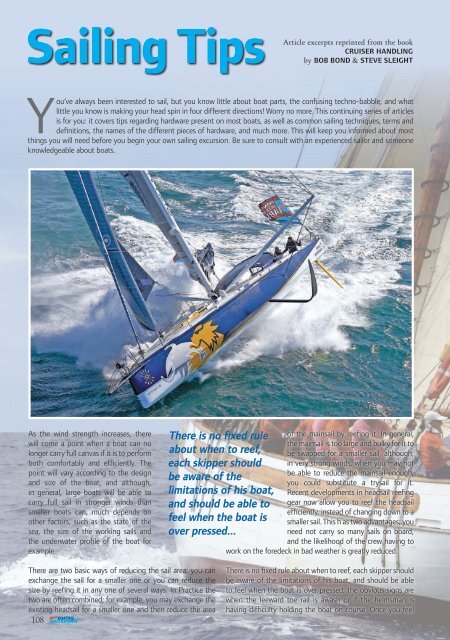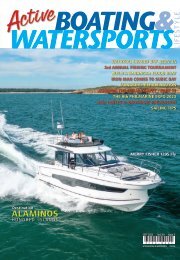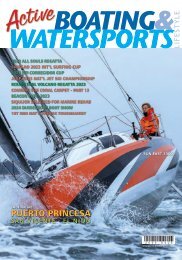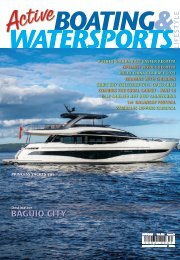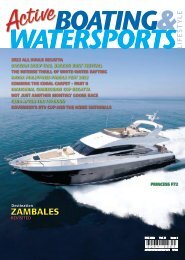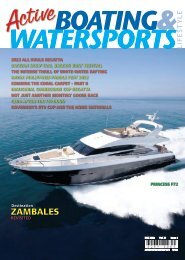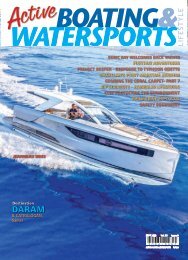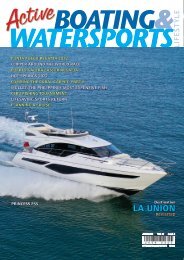ABW March 2024
You also want an ePaper? Increase the reach of your titles
YUMPU automatically turns print PDFs into web optimized ePapers that Google loves.
Sailing Tips<br />
Article<br />
excerpts reprinted from the book<br />
CRUISER HANDLING<br />
by BOB BOND & STEVE SLEIGHT<br />
You’ve always been interested to sail, but you know little about boat parts, the confusing techno-babble, and what<br />
little you know is making your head spin in four different directions! Worry no more. This continuing series of articles<br />
is for you: it covers tips regarding hardware present on most boats, as well as common sailing techniques, terms and<br />
definitions, the names of the different pieces of hardware, and much more. This will keep you informed about most<br />
things you will need before you begin your own sailing excursion. Be sure to consult with an experienced sailor and someone<br />
knowledgeable about boats.<br />
As the wind strength increases, there<br />
will come a point when a boat can no<br />
longer carry full canvas if it is to perform<br />
both comfortably and efficiently. The<br />
point will vary according to the design<br />
and size of the boat, and although,<br />
in general, large boats will be able to<br />
carry full sail in stronger winds than<br />
smaller boats can, much depends on<br />
other factors, such as the state of the<br />
sea, the size of the working sails and<br />
the underwater profile of the boat for<br />
example.<br />
There is no fixed rule<br />
about when to reef,<br />
each skipper should<br />
be aware of the<br />
limitations of his boat,<br />
and should be able to<br />
feel when the boat is<br />
over pressed...<br />
of the mainsail by reefing it. In general,<br />
the mainsail is too large and bulky for it to<br />
be swapped for a smaller sail, although,<br />
in very strong winds, when you may not<br />
be able to reduce the mainsail enough,<br />
you could substitute a trysail for it.<br />
Recent developments in headsail reefing<br />
gear now allow you to reef the headsail<br />
efficiently, instead of changing down to a<br />
smaller sail. This h as two advantages; you<br />
need not carry so many sails on board,<br />
and the likelihood of the crew having to<br />
work on the foredeck in bad weather is greatly reduced.<br />
There are two basic ways of reducing the sail area; you can<br />
exchange the sail for a smaller one or you can reduce the<br />
size by reefing it in any one of several ways. In Practice the<br />
two are often combined; for example, you may exchange the<br />
existing headsail for a smaller one and then reduce the area<br />
108<br />
There is no fixed rule about when to reef, each skipper should<br />
be aware of the limitations of his boat, and should be able<br />
to feel when the boat is over pressed; the obvious signs are<br />
when the leeward toe rail is awash or if the helmsman is<br />
having difficulty holding the boat on course. Once you feel


